| 16 January |
• yesterday • tomorrow |
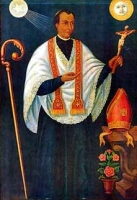
• Apostle of Ceylon
• Apostle of Sri Lanka
Born to Christopher Vaz and Maria de Miranda, Christian parents of the Konkani Brahmin caste; the third of six children. Attended primary and secondary school in Sancoale, where he learned Portugese, and Benaulim, where he learned Latin. He studied humanities at the Jesuit Goa University, philosophy and theology at Saint Thomas Aquinas Academy.
Ordained in 1676. Preacher and confessor. Opened a Latin school in Sancoale for perspective seminarians. Always devoted to Our Lady, in 1677 he consecrated himself as a "slave of Mary," sealing it with a document known as his "Letter of Enslavement".
About this time Joseph learned of the condition of Catholics in Ceylon; persecuted by the Dutch, they had had no priests for 50 years. He sought permission to work in Ceylon, but was asked to go to the mission in Kanara. He accepted, but his thoughts and heart were in Ceylon. Vicar of Vara in Kanara, preaching, hearing confessions, visiting the sick, helping the poor, ransoming Christian slaves, working to settle jurisictional disputes that interfered with the sacraments.
Meanwhile, a small congregation of priests had formed in Goa with the Church of the Holy Cross of Miracles as their residence. Joseph joined and was elected superior. He gave a definitive canonical status to this Oratory, introduced religious exercises and charitable activities, and trained its members for the mission. In 1686 he gave up his position, and set out for Ceylon. Disguised as an itinerant worker, he reached the port of Tuticorin on Easter 1687, and then the Dutch stronghold of Jaffna in the north of the Ceylon.
He suffered from acute dysentery, contracted from the terrible travelling conditions, and upon recovery he began his mission by contacting Catholics and hiding from the Dutch. He was taken in by a courageous Catholic, and ministered to his secret flock by night. One step ahead of the authorities, in 1689 he went to the Catholic village of Sillalai and began ministering to folks in surrounding villages.
In 1690 Joseph moved on to Puttalam in the Kingdom of Kandy, where 1,000 Catholics had not seen a priest for half a century. He decided to make Kandy the centre of his apostolate, and in 1692 he left for there, hoping to obtain royal permission to travel freely. Instead, he was preceded by Calvinist accusations of being a Portugese spy, and was imprisoned with two other Catholics. There he learned Sinhala, the local language, and since the prison guards left the prisoners alone as long as they didn't try to escape, he built a hut-church and later a proper church dedicated to Our Lady, and began converting other prisoners.
In 1696 the Kingdom of Kandy was suffering a serious drought, and the king asked the Buddhist monks to pray to their gods for rain; there was no rain. He then turned to Joseph who erected an altar and cross in the middle of the square and prayed; abundant rain began to fall, while Joseph and his altar stayed dry. The king granted Joseph license to preach throughout the kingdom.
Making the most of his new-found freedom, he made a mission visit to the Dutch zone and visited Catholics in Colombo. Three missionaries from the Oratory of Goa arrived in 1697 to help him with the news that Don Pedro Pacheco, Bishop of Cochin, had appointed him Vicar General in Ceylon. He was organizing the basic mission structure when smallpox broke out in Kandy. His work with the sick convinced the king to allow Father Joseph every possible freedom in his labours.
Joseph carried his mission to the main centres of the island. He returned to Kandy in 1699 with Father Joseph de Carvalho who had been expelled at the instigation of Buddhist monks. He completed the construction of his new church, and went into service for the king, translating Portuguese books into Sinhala. From this vantage point, he intensified his ministry, and converted some Sinhalese notables, which gave rise to slanders against him and persecution of converts.
New missionaries arrived in 1705, which enabled him to organize the mission into eight districts, each led by a priest. He worked on the creation of a Catholic literature comparable to that of the Buddhists, and to affirm the rights of Catholics with the Dutch Protestant Government.
King Vimaldharna Surya II, Father Joseph's mentor, died in 1707, but Narendrasimha, his successor, was an even greater supporter. New missionaries arrived in 1708, and in 1710, despite health problems, Joseph took another apostolic trip. On his return, he fell ill from his carriage, and reached Kandy in serious condition. Though he recovered from a series of infections and fevers over the next year, age, work, and disease had finally worn him out. He undertook nine days of spiritual exercises prescribed by the Rule, but before the seventh day, he was called home to God.
21 April 1651 at Benaulim, Salcette, Goa, India
• late night 17 January 1711 at Kandy, Sri Lanka of natural causes
• due to the size of the crowds of mourners, his body had to be exposed for three days
• buried in the church in Kandy
• 17 September 2014 by Pope Francis (papal confirmation of plenary session sentence; his Cause had been investigated since 1737)
• 20 October 2014 by Pope Francis (consistory for canonization)
• 14 January 2015 by Pope Francis (recognition celebration in Galle Face Green park, Colombo, Sri Lanka)
archdiocese of Goa and Damão, India
https://catholicsaints.info/saint-joseph-vaz/
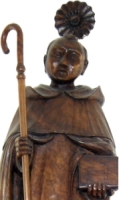
Gonçalo, Gonzalvus, Gundisalvus
10 January (Dominicans)
Born to a wealthy, high-ranking family. Upon his ordination, he transferred his great wealth to his newphews, and spent 14 years in pilgrimage through the Holy Lands; his family did not recognize him when he returned, and his nephew set the dogs on him. Dominican friar. Received permission from his superiors to live as a hermit near Amaranthe, Portugal. Built a bridge over the Tamega River, mainly with his own hands.
Many wonderful incidents are told of Blessed Gonzalo. Among them
• As he was being carried to the baptismal font as an infant, he fixed his eyes on the church's crucifix with a look of extraordinary love.
• He was directed to the Dominicans by a supernatural directive that he should join the Order in which the Office began and ended with the Ave Maria.
• When workers who helped briefly with his bridge building ran out of wine, Gonzalo prayed, smacked a rock with a stick, it split open, and wine poured out.
• When the workers ran out of food, Gonzalo went to the water, called out, and fish jumped onto the river bank to feed them.
• During a homily, in which he wanted to show the horror of exclusion from the Church, he 'excommunicated' a basket of bread; the loaves immediately became black, rotted and inedible. When he removed the 'excommunication' a few minutes later, the bread became fresh and wholesome again.
1187 at Vizella, diocese of Braga, Portugal
10 January 1259 of natural causes
1560 by Pope Pius IV
• Dominican with Saint Francis of Assisi
• Dominican with Saint Bernardine of Siena
• with the Christ Child, holding a ball, shining light on him
• Dominican holding a monastery in his hand
• Dominican giving food to beggars
God of mercy and compassion, in your grace Blessed Gonsalvo came to love your holy name and served you in the solitary life. By the help of his prayer and the grace of the Spirit may we keep you in our thoughts and with burning zeal do what is pleasing to you. We ask this through our Lord Jesus Christ, your Son, who lives and reigns with you and the Holy Spirit, one God, for ever and ever. - General Calendar of the Order of Preachers
https://catholicsaints.info/blessed-gonzalo-de-amarante/
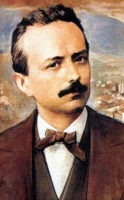
Eldest of seven children born to Moses and Rosa Malaguzzi; uncle and god-father of Blessed Mose Tovini. Studied law at the University of Padua, and worked at a firm in Lovere, Italy. Teacher and deputy director of a local college. Moved to diocese of Brescia, Italy in 1864. Mayor of Cividate Camuno, Italy from 1871 to 1874 where he worked to improve public construction. Married to Emilia Corbolani in the church of Saint Agatha in Brescia on 6 January 1875; father of ten, two of whom became nuns, and one a Jesuit. Member of the Secular Franciscans. Founded the Catholic newspaper Il Cittadino di Brescia (The City of Brescia) in 1878. President of the diocesan Committee of the Opera dei Congressi. Municipal and provincial councilor in Brescia where he worked to defend and help the poor and alienated. Founded the Saint Joseph Kindergarten and the College of Venerable A Luzzago in 1882. Founded the Banco Ambrosiano in Milan, Italy in 1888. Founded the Banca Santa Paolo in Brescia in 1888. Founded the Society for the Preservation of the Faith in Italian Schools in 1890. Founded the journal Faith and School in 1891. Help found an insurance company for Catholic teachers. Helped founded the Union Leone XIII to support the faith of students in university in Brescia, and worked support similar groups in other schools. Founded the magazine Modern Italian School in 1893. Founded the weekly journal La Voce del Popolo in 1893. Helped the Canossian sisters found a teaching college in Cividate Camuno in 1894. Supported the Catholic University Federation, and the creation of Catholic universities in Italy.
14 March 1841 in Cividate Camuno, Brescia, Italy
• 16 January 1897 in Brescia, Italy of natural causes
• re-interred in the Church of Saint Luke in Brescia on 10 September 1922
• 20 September 1998 by Pope John Paul II
• the beatification miracle involved the healing of a nun in the monastery of the Visitation of Holy Mary of Massa and Cozzile in Potenza, Italy
https://catholicsaints.info/blessed-giuseppe-antonio-tovini/
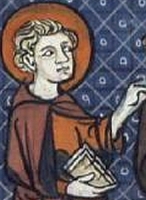
• Fursey of Lagny
• Fursa, Furseo, Furse, Fursae, Fursu, Fulsey, Furseus
Son of an Irish prince. Related to Saint Foillan and Saint Ultan of Péronne. Educated by Saint Brendan the Voyager. Priest. Abbot of a house at Rathmat, Ireland. Preached, evangelized, and established monasteries in Ireland for twelve years. Evangelized in England, building monasteries. Evangelized in France, working with Saint Blitharius; they had great success. Clovis, king of the Franks, received him, and asked that he build a house at Lagny, France. Raised the young son of a court nobleman from the dead. Given to ecstacies and trances during which he received visions of a immense struggle between good and evil, with glimpses of heaven and hell. The visions were described in the aptly named Visions of Fursey, and had a great effect on such works as Dante's Divine Comedy. Bede wrote extensively and glowingly of Fursey. His image is on the banner of the city of Peronne, France.
c.567 at Munster, Ireland
• 648 at Mezerolles, France
• buried at Peronne, Picardy, France
• when his relics were translated in 654, his body was found incorrupt
• relics re-translated in 1056
• relics re-translated in 1256
• miracles reported at his tomb
• most relics destroyed in the French Revolution
Peronne, France
• abbot raising a young nobleman from the dead
• abbot in an ecstastic trance
• priest in a trance with spectral images hovering nearby
• man with two oxen at his feet
• striking water from the soil at Lagny with the point of his staff
• watching a vision of angels
• watching the flames of purgatory and hell
https://catholicsaints.info/saint-fursey-of-peronne/
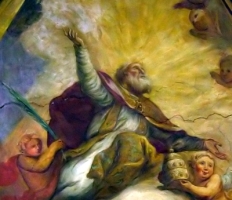
Marcel, Marcelo
Nothing of his life before the papacy has survived the centuries. Pope at the end of the persecutions of Diocletian; the persecutions had so disrupted the Church that there had been a gap of over a year with no Pope. Faced reconsituting the clergy which had been decimated and whose remnant had practiced their vocation covertly and with the expectation of martyrdom. Worked to recover and welcome back those who had denied the faith to keep from being murdered.
When a group of the apostacized, known as the Lapsi, refused to do penance, Marcellus refused to allow their return to the Church. This group had some political pull, and some caused such civil disruption that Emperor Maxentius exiled the Pope in order to settle the matter. Legend says that Marcellus was forced to work as a stable slave as punishment, but this appears to be fiction. Considered a martyr as he died of the terrible conditions he suffered in exile.
May-June 308
• 309
• initially buried in the cemetery of Saint Priscilla in Rome, Italy
• relics later translated to beneath the altar of San Marcello al Corso church in Rome where they remain today
stablemen
• pope with a donkey or horse nearby
• pope standing in a stable
https://catholicsaints.info/pope-saint-marcellus-i/
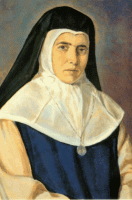
Joanna Maria Condesa Lluch
Born into a wealthy and pious family, she received a good secular and Christian education. Even as a child Juana was devoted to the Holy Eucharist and Our Lady, and felt a call to serve. As she grew she developed a deep prayer life, felt a call to religious life, and a need to help factory workers who lived in horrible, de-humanizing and life-shortening conditions of 19th century industrialization.
Cardinal Antolín Monescillo, archbishop of Valencia initially refused her permission to found a religious congregation, saying she was too young. But in 1884 she received permission to open a shelter to provide material and spiritual assistance to factory workers and their families. Soon after she opened a school for their children, and other young women felt a call to help in the work. They formed the basis for the Congregation of the Handmaids of the Immaculate Conception, Protectress of Workers which she founded in Valencia, Spain. They are teachers, spiritual directors and protectors of the poor, especially young working women. The Congregation received diocesan approval in 1892, temporary papal approval from Pope Pius XI on 14 April 1937, and definitive approval on 27 January 1947 from Pope Pius XII.
30 March 1862 in Valencia, Spain
16 January 1916 in Valencia, Spain of natural causes
23 March 2003 by Pope John Paul II
https://catholicsaints.info/blessed-juana-maria-condesa-lluch/
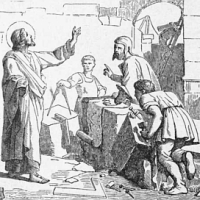
Honorat, Honore
Son of a Roman consul, and raised as a pagan. Converted to Christianity as a young man. Friend of Saint Caprasius; brother of Saint Venantius. Lived and studied monasticism in Greece, Egypt and Palestine. When he returned to France, he founded the abbey of Lérins on the isle of the same name off the coast of Provence, France. Abbot of the house. In 426 he was ordered to accept the archbishopric of Arles, Gaul (modern France). Teacher of Saint Hilary of Arles, who served as secretary of Honoratus. Worked against the Arian and Manichaean heresies, and re-established orthodoxy.
c.350 in northern Gaul
• January 429 of natural causes
• relics at Lérins
• against drought
• against misfortune
• against rain
• for rain
• bishop drawing water from a rock with his mitre nearby
• bishop on Lérins with a phoenix nearby
• driving snakes from Lérins
• overseeing the construction of the abbey at Lérins
https://catholicsaints.info/saint-honoratus-of-arles/
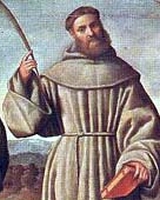
• Berardes of Carbio
• Berard, Berardo, Beraldus
Born to the Italian nobility. Franciscan monk accepted into the order by Saint Francis of Assisi himself in 1213. Priest. Preacher. Spoke Arabic. Leader of a party (with Peter, Otho, Accursius, and Adjutus) sent by Saint Francis to preach to Muslims in Morocco. Upon arrival, they began preaching in the market place. They were immediately arrested and ordered to stop. When the group continued to preach, they were beaten. When they refused to renouce Christ, the sultan beheaded them. They are believed to be the first Franciscan martyrs. Upon viewing their relics, young Anthony of Padua was moved to join the Franciscans and set off to preach in Morocco.
at Carbio, Umbria, Italy
• beheaded on 16 January 1220 in Morocco
• relics were ransomed, and are now in the monastery of the Holy Cross in Coimbra, Portugal
1481 by Pope Sixtus IV
https://catholicsaints.info/saint-berardes-of-morocco/
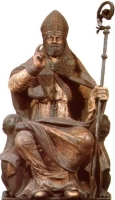
• Titian of Venice
• Tiziano of Oderzo
Born to the Italian nobility. Educated by Bishop Floriano of Oderzo, Italy. Priest. Treasurer of the diocese of Oderzo. Noted for his charity. When Floriano was assigned to another diocese, Titian was chosen by popular acclaim as the reluctant new bishop of Oderzo; he tried to get Floriano to return, but eventually took over the see. He was a model of religious life and shepherd to his people, noted for his ability as a preacher. Fought against Arianism.
Heraclea, Italy
• 16 January 632 in Oderzo, Italy of natural causes
• buried in the cathedral of Oderzo, which no longer exists
• relics re-interred in a bronze Byzantine sarcophagus in Vittorio Veneto
Pre-Congregation; cultus known to have been active in the 8th century
• Oderzo, Italy, city of
• Oderzo, Italy, diocese of
• Vittorio Veneto, Italy
https://catholicsaints.info/saint-titian-of-oderzo/
• James de Leuteri
• James of Eleuterii
• Giacomo
Born to the Italian nobility, he spent the early part of his life managing his family's business. At age 40 he became a Carmelite lay brother at the abbey of Melegnano, Italy. He and two other lay brothers retured to the family estates in Luino, Italy in 1475 to build a chapel to Our Lady of Mount Carmel. James dedicated himself to the spiritual and physical care of local people; he was known for his gift of healing by prayer and of turning stones into bread.
c.1416 in Luino, Italy
• 1477 in Luino, Italy of natural causes
• witnesses report that as he died, the candles all around the room suddenly lit on their own
• buried in the church of Saint Peter in Luino
• relics transferred to a new parish church in Luino in 1578
• grave re-discovered in 1834 and the relics moved to the chapel of the Blessed Virgin Mary he had helped to build
https://catholicsaints.info/blessed-james-of-luino/
While exiled from East Anglia to France during the reign of King Redwald, Sigeberht converted to Christianity. He returned to East Anglia as king in 630, the first Christian king of the region. Worked with Archbishop Honorius of Canterbury and Saint Fursey to bring Christianity to his subjects. Helped found churches, schools and monasteries. After a short reign, he abdicated in favour of Ecgric and retired to become a monk. When Mercia invaded East Anglia, Sigeberht was taken against his will from his monastery to the battle field in hopes that he would rally the army; he refused to carry a weapon or fight, and was killed by the pagan King Penda of Mercia. Venerated in East Anglia as a martyr.
6th century East Anglia (part of modern England)
murdered in 635 in East Anglia, England
https://catholicsaints.info/saint-sigeberht-of-east-anglia/
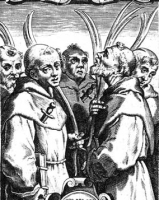
Accursius
Franciscan Friar Minor. Saint Francis of Assisi to evangelize the Moors of the West. He and his fellow missionaries preached in Italy, Aragon, Coimbra, Seville, and finally in Morocco, where they were banished and, upon their return, martyred.
• 16 January 1220 in Morocco by being scourged till his ribs appeared bare, having burning oil and vinegar poured into the wounds, body rolled on sharp stones and potsherds, then his head split by a sword
• relics were ransomed, and are now in the monastery of the Holy Cross in Coimbra, Portugal
1481 by Pope Sixtus IV
sword
https://catholicsaints.info/saint-accursies-of-morocco/
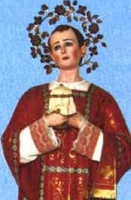
• Dana of Aulana
• Dana of Aulon
• Dana of Vlore
• Danacte, Danacto, Danatte, Danax, Donato, Donatus
24 January (Armenian)
Immigrant to and deacon in Santa Maria di Leuca, Italy. When the port town was invaded, Dana gathered up the sacred vessels and scriptures and ran inland; he managed to consume the consecrated Hosts to prevent them from being profaned. Ordered to sacrifice wine to the pagan god Bacchus, Dana refused. Martyr.
6th century Vlora, Albania
• hacked to death with swords near Santa Maria di Leuca, Italy
• body parts thrown into the sea
https://catholicsaints.info/saint-dana-of-leuca/
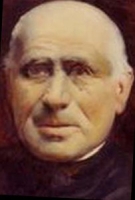
Priest in the diocese of Carcassonne, France. Founder of the Congregation of the Guardian Angel Sisters.
14 July 1809 in Quillan, Aude, France
16 January 1890 in Gijon, Asturias, Spain of natural causes
• 22 April 2017 by Pope Francis
• the beatification miracle involved the cure from maxillofacial cancer of one of the Spanish sisters of the Guardian Angel
• the beatification recognition was celebrated in Oviedo, Spain by Cardinal Angelo Amato
https://catholicsaints.info/blessed-louis-antoine-rose-ormieres-lacase/

Franciscan Friar Minor. Saint Francis of Assisi to evangelize the Moors of the West. He and his fellow missionaries preached in Italy, Aragon, Coimbra, Seville, and finally in Morocco, where they were banished and, upon their return, martyred.
• 16 January 1220 in Morocco by being scourged till his ribs appeared bare, having burning oil and vinegar poured into the wounds, body rolled on sharp stones and potsherds, then his heads split by a sword
• relics were ransomed, and are now in the monastery of the Holy Cross in Coimbra, Portugal
1481 by Pope Sixtus IV
https://catholicsaints.info/saint-peter-of-morocco/
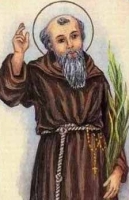
Franciscan Friar Minor. Saint Francis of Assisi to evangelize the Moors of the West. He and his fellow missionaries preached in Italy, Aragon, Coimbra, Seville, and finally in Morocco, where they were banished and, upon their return, martyred.
• 16 January 1220 in Morocco by being scourged till his ribs appeared bare, having burning oil and vinegar poured into the wounds, body rolled on sharp stones and potsherds, then his heads split by a sword
• relics were ransomed, and are now in the monastery of the Holy Cross in Coimbra, Portugal
1481 by Pope Sixtus IV
https://catholicsaints.info/saint-otto-of-morocco/
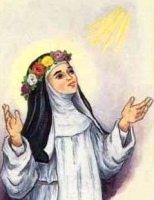
Giovanna, Jeanne
13 February (Camaldolese menology)
Camaldolese nun. Friend of Saint Agnes of Bagno di Romagna.
Tuscany, Italy
• 16 January 1105 at Bagno di Romagna, Forli, Italy of natural causes
• at the moment of her death the local church bells all rang spontaneously
15 April 1823 by Pope Pius VII (cultus confirmation)
Bagno di Romagna, Italy
lily
https://catholicsaints.info/blessed-joan-of-bagno-di-romagna/
• Henry of Cocket
• Henry the Dane
Drawn to religious life from an early age, Henry sailed to England to live as a hermit on Coquet (Cocket) Island off Northumberland without the pressure of family and friends who wanted him to forego such devotions. Never joined any order, but lived under the direction of the monks at Tynemouth, England.
11th century Denmark
• 16 January 1127 on Coquet Island, England of natural causes
• buried in the church of Blessed Virgin at Tynemouth, England
https://catholicsaints.info/saint-henry-of-coquet/
• Konrad Bosinlother
• Conrad...
Benedictine monk at Siegburg Abbey. Abbot of Mondsee in Upper Austria in 1127. When some nobles seized property belonging to his monastery, Konrad demanded that it be returned; the nobles had him killed. His brother monks considered him a martyr as he died for defending his monastery.
c.1100 at Trier, Germany
• murdered in Oberwang, Austria in 1145
• relics in the church of the Mondsee Abbey
https://catholicsaints.info/blessed-konrad-ii-of-mondsee/
• Apostle of Savoy
• James the Syrian
• James the Assyrian
• Giacomo
Soldier in the imperial Persian army. Convert to Christianity. Monk. Spiritual student of Saint Honoratus at Lérins in France. Missionary to the Savoy region. First bishop of Moûtiers, France in 426. Known as a miracle worker.
Syrian
16 January 429 in Arles, France
https://catholicsaints.info/saint-james-of-tarentaise/
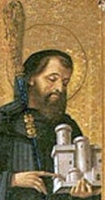
Sixth century Benedictine monk. Founder and abbot of the monastery at Fondi, southern Italy. Pope Saint Gregory the Great wrote a brief biography of him.
Fondi, Italy
https://catholicsaints.info/saint-honoratus-of-fondi/
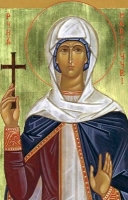
Married to Manius Acilius Glabrio. Mother of Senator Pudens. Supported Saint Peter the Apostle in his work in Rome, Italy, her villa near the Roman catacombs serving as Peter's headquarters.
https://catholicsaints.info/saint-priscilla-of-rome/
Hermit. Abbot on Clanmocnoise, near Westmeath, Ireland c.969. In his last years he retired from abbacy to resume the life of a hermit at Armagh, Ireland.
in Westmeath, Ireland
988 in Armagh, Ireland of natural causes
https://catholicsaints.info/saint-dunchaid-obraoin/
Trivier, Triviero, Troverio
Known as a spiritual child. Hermit near the monastery of Thérouanne, and then at Dombes at a young age. The French village of Saint Trivier is named for him.
Neustria, Gaul (in modern France)
550 of natural causes
https://catholicsaints.info/saint-triverius/
Hermit for many years near Sorrento, Italy. Reluctant bishop of Sorrento, chosen by the people of that city due to his wisdom and piety.
453 of natual causes
Sorrento, Italy
https://catholicsaints.info/saint-valerius-of-sorrento/
Bishop of Rhinocolura on the Mediterranean Sea near the boundary between Egypt and Palestine. Imprisoned and tortured by Arian heretics.
385
https://catholicsaints.info/saint-melas-of-rhinocolura/
Leobato
Fifth-century monk. Spiritual student of Saint Urso. Abbot of Saint Orso Sénevière abbey in Lugdunense, Gaul (in modern France).
https://catholicsaints.info/saint-leobazio/
Sister of Saint Honorata and Saint Ephiphanius of Pavia. Nun.
Pavia, Italy
https://catholicsaints.info/saint-liberata-of-pavia/
• Adjute of Morocco
CatholicSaints.Info Portable Edition